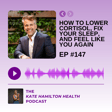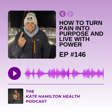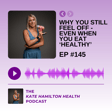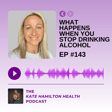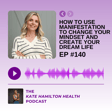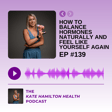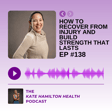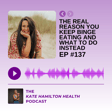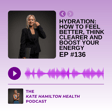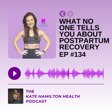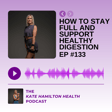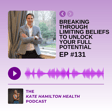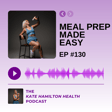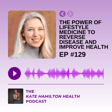
#110: How to create a calorie deficit using tracking and hand portions
In this solo episode of The Kate Hamilton Health Podcast, I break down how to achieve a calorie deficit - the key to sustainable weight loss.
I chat about two different methods: tracking calories and the hand portion method, so you can find the best approach for your lifestyle. I also share why starting with higher calorie targets is so important, how to use my calorie calculator for accuracy, and why a balanced, sustainable diet beats restrictive eating every time.
Plus, I share you practical tips for using MyFitnessPal to track your intake effectively and explain how to manage your weekly calories for long-term success. If you're looking for a simple, flexible, and science-backed way to lose fat without obsession, this episode is for you!
Episode Breakdown:
[00:00] Introduction to calorie deficit
[00:35] Understanding calorie deficit and hand portions
[01:24] Hand portion method explained
[04:31] How to start tracking calories
[05:42] Tips for accurate calorie tracking
[06:33] Sustainable weight loss strategies
[08:24] The different phases of fat loss
[11:21] Managing weekly calorie intake
[14:04] How to use MyFitnessPal for tracking
[20:01] Final takeaways and encouragement
Links & Resources:
If you enjoyed this episode, please subscribe, leave a review, and share it with friends who might benefit. For more health and fitness tips, follow me on Instagram and TikTok @katehamiltonhealth.
Music b LiQWYD Free download: hypeddit.com/link/xxtopb [http://hypeddit.com/link/xxtopb] Promoted by FreeMusicPromo [https://www.youtube.com/channel/UCbycji-eySnM3WD8mbxPUSQ] / @freemusicpromo

